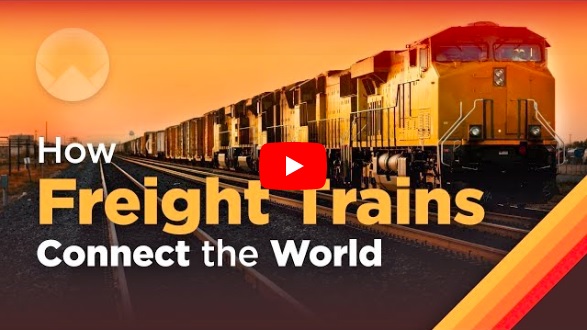Freight and Transportation Part 4

Order now and get free shipping!!!!!!
Have you thought about why and how companies want to/can afford to offer free shipping if you order, for example, $49.99 or more of their product? Well here’s the truth, the companies have negotiated a deal with the distributors and/or the shippers for discounted rates. This ends up being a break even or loss leader deal and the savings are in the negotiated freight savings.
Carrier Selection
Most carriers that were not qualified or financially stable were weeded out during the last 2 decades so that those that remain (partial list attached and also look at the USA map with the regional carriers referenced) are reputable and professional.
Initially your carrier selection should be based on services provided, discount offered, volume of freight claims, and specific region serviced. Thereafter, by experimenting with various other regional carriers’ specific needs and services provided, you can put a finer point on the selections.
When we discuss routings you will want to pay particular attention to the routs your carriers are using with the overall thought that “the most direct routes are less costly and the more stops there are the more expensive it will be.”
Routing
As said previously, the less stops the better, the more direct the route the cheaper. The fewer interchanges the better. Each stop and interchange/interline cost time, increases the possibility for loss, damage, and delays. DO NOT ALLOW interline shipments!!! You lose discounts when loads are interlined!!! The reason for interlining/interchanges are simple; the freight companies want to maximize the loads so drop offs and consolidating loads is a way to do that.
Strategies/Action
In order to put together a comprehensive freight savings program you must gather some basic information. Then you must analyze the data so that you understand it and can develop a basic profile of your freight activities. Some of the data that needs to be gathered is shown below.
- Points of shipping origin (inbound and outbound).
- Volume of receipts.
- Number of carriers used.
- Estimated weight received.
- Types/classification of freight.
- Receiving locations.
- Majority of freight both inbound or outbound.
- Points of destination.
- Freight terms and FOB terms.
Some results of my analysis in the past are detailed below.
- 90% of Freight is inbound.
- 85% of the freight comes from the Northeast.
- Historically FOB Points/Freight Terms have been FOB Destination or Pre Pay and Bill (or Add).
- Freight has historically been consistent and repetitive.
- Historically used up to 50 to 70 carriers.
As a result, the first noticeable change was culling carriers from 50 to 70 down to 10 to 12 and later down to 9 (3 local, 3 regional, 2 Long haul, and 1 rigger/hi/wide/heavy).
Next, develop a routing guide and remember KISS…keep it simple stupid.
XXXX Company
SAMPLE
Freight Routing Guide and Instructions
Use FedEx or UPS on all small shipments (under 70 lbs.)
| Shipping Point | LTL Carrier (select one) |
| CT | E, NEMF, OD |
| DE | E, NEMF, OD |
| MA | E, NEMF, OD |
| MD | PO, RL, W |
| ME | E, NEMF, OD |
| NH | E, NEMF, OD |
| NJ | E, NEMF, OD |
| NY (City) | E, NEMF, OD |
| NY (other than city) | E, NEMF, OD |
| OH | PO, W |
| PA | PO, W, R+L |
| RI | W, NEMF |
| VA | E, NEMF, OD |
| VT | E, NEMF, OD |
| WV | OD, W, PO |
| Wash DC | E, NEMF, OD |
From all other locations use YRC
Approved Carriers
Local Regional Long Haul
E = Estes PO = Pitt Ohio YRC = YRC
N = NEMF R+L = R + L
OD = Old Dominion Ward = Ward Trucking
Top LTL Carriers Based on 2017 Revenues
Carrier Name 2017 (Mil) YoY % Change
Old Dominion $3,304 12.5%
YRC Freight $3,033 3.8%
Estes $2,476 14.8%
ABF Freight $1,948 4.0%
R+L Carriers $1,580 8.8%
SAIA $1,379 13.1%
Holland $1,132 8.2%
SouthEastern $1,116 7.0%
Averitt Express $769 7.2%
Central Transport $754 7.2%
Pitt Ohio $556 7.1%
AAA Cooper $554 6.9%
New England MF $402 1%
A. Duie Pyle $310 6.9%
New Penn $281 -9.1%
Ward Trucking $166 8.8%
So let’s review the “highlights” of these 4 posts on Freight, Traffic, and Logistics.
- Discounts can be negotiated from freight carriers.
- Discounts up to 70% are routinely available.
- Need to have the PO terms as “Destination FOB Collect.”
- FOB Collect defines beneficial ownership and who owns it and where.
- Freight Classification is fundamental to lower rates.
- FAK Classification is an average of your freight and is great for savings.
- Routing is critical to savings.
- Each interline/interchange costs money and increases possible loss/damage.
- Data mining to learn the details of your business is important.
- Fewer carriers means bigger savings and fewer freight claims.
- COD means Cash on Delivery NOT Collect on Delivery.
- FOB means Free on Board not Frizbees and bananas.
Stay tuned for the rest of the series.
Your path to business success.

